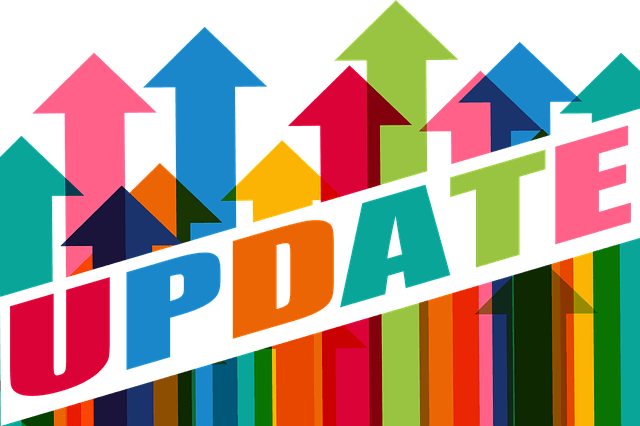Mortgage Articles

Are you dreaming of homeownership but struggling to save for a down payment? Whether you’re looking to buy your first home or move up to a bigger property, saving smartly is the key to making homeownership a reality. Here’s how you can assess your finances, cut unnecessary expenses, and create a savings plan that gets you into your dream home faster. Step 1: Know Your Income Before you can start saving, you need clarity on your income. Create a list of all your income sources, including: Take-home salary (after taxes) Variable income (overtime, tips, bonuses, commissions) Government benefits (child tax benefits, pensions, etc.) Annual income sources (tax returns, side hustles) By tracking all sources of income, you’ll know exactly how much money you have available to save. Step 2: Track Your Expenses Most people underestimate their spending. To get a clear picture of your finances, analyze the past 3-6 months of expenses, including: Fixed expenses (rent, utilities, insurance, phone bills) Discretionary spending (eating out, shopping, subscriptions) Debt payments (credit cards, car loans, student loans) Once you have everything listed, identify areas where you can cut costs to free up money for your down payment. Step 3: Build a Savings Plan Now that you know your income and expenses, create a savings plan: Set a goal – Determine how much you need for your down payment (5%, 10%, or 20% of your target home price). Automate savings – Set up automatic transfers to a separate down payment savings account every payday. Reduce unnecessary expenses – Cut back on dining out, impulse shopping, and unused subscriptions. Find extra income – Consider freelancing, selling unused items, or taking on a side hustle. Step 4: Improve Your Mortgage Readiness Saving is just one piece of the puzzle—qualifying for a mortgage is another! Lenders look at your income, credit score, and debt levels when assessing mortgage applications. Check your credit score and improve it by paying bills on time. Lower your debt to improve your debt-to-income ratio. Talk to a mortgage professional early to explore your options. Step 5: Get Expert Mortgage Advice At Silverman Mortgage, we help you create a customized plan to save for a down payment and qualify for a mortgage faster. Our team can: Analyze your financial situation and recommend strategies Guide you on down payment options (gifted funds, first-time buyer incentives) Find the best mortgage solution tailored to your needs 💬 Ready to take the next step? Contact Silverman Mortgage today for a free consultation and start your journey to homeownership!

If you’re thinking about buying a property, but you’re not sure where to start, you’ve come to the right place! Let’s discuss how getting pre-approved is one of the first steps in your home buying journey. Just like you wouldn’t go into a restaurant without knowing if you have enough money to buy your meal, it’s not a good idea to be shopping for a home without an understanding of how much you can afford. You can browse MLS from your couch all you want beforehand, but when you’re ready to start looking at properties with a real estate agent, you need a pre-approval. Now, as there may be some confusion around exactly what a pre-approval does and doesn’t do, let’s discuss it in detail. First of all, a pre-approval is not magic, and it’s not binding. A pre-approval is not a contract that will guarantee mortgage financing despite changes to your financial situation. Instead, a pre-approval is simply the first look at your overall financial health that will point you in the right direction before you’re ready to apply for a mortgage. Said in another way, a pre-approval is a map that gives you the plan to secure an actual approval. After going through the pre-approval process, you’ll know how to qualify for a mortgage and at what amount. When considering your mortgage application, lenders look at your income, credit history, assets vs liabilities, and the property itself. Working through a pre-approval will cover all these areas and will uncover any major obstacles that might be in your way of securing financing. The best time to secure a pre-approval is as soon as possible; it’s never a bad idea to have a plan. Here are a few of the obstacles that a pre-approval can uncover: You’ve recently changed jobs, and you’re still on probation Your income relies heavily on extra shifts or commissions You’re unaware of factual mistakes or collections on your credit report You don’t have an established credit profile You don’t have enough money saved for a downpayment Additional debt is lowering the amount you qualify for Really anything you don't know that you don't know Even if you believe you have all your ducks in a row, working through the pre-approval process with an independent mortgage professional will ensure you have the best chance of securing a final approval. As a point of clarity, a pre-approval is not the same as a pre-qualification. This is not typing a few things into a website, calculating some numbers, and thinking you’re all set. A pre-approval includes providing your financial information, looking at your credit report, discussing a plan for securing mortgage financing with a mortgage professional, and even submitting documents ahead of time. Mortgage financing can be a daunting process; it doesn’t have to be. Having a plan in place and doing as much as you can beforehand is essential to ensuring a smooth home buying experience. As there is no cost for getting a mortgage pre-approval, there is absolutely no risk. Consider starting the process right now! If you’d like to walk through your financial situation and get pre-approved for a mortgage, let’s talk. It would be a pleasure to work with you!

One of the major qualifiers lenders look at when considering your application for mortgage financing is your debt service ratios. Now, before we get started, if you prefer to have someone walk through these calculations with you, assess your financial situation, and let you know exactly where you stand, let’s connect. There is no use in dusting off the calculator and running the numbers yourself when we can do it for you! However, if you’re someone who likes to know the nitty-gritty of how things work instead of simply accepting that's just the way it is, this article is for you. But be warned, there are a lot of mortgage words and some math ahead; with that out of the way, let’s get started! “Debt servicing” is the measure of your ability to meet all of your financial obligations. There are two ratios that lenders examine to determine whether you can debt service a mortgage. The first is called the “gross debt service” ratio, or GDS, which is the percentage of your monthly household income that covers your housing costs. The second is called the “total debt service” ratio, or TDS, which is the percentage of your monthly household income covering your housing costs and all your other debts. GDS is your income compared to the cost of financing the mortgage, including your proposed mortgage payments (principal and interest), property taxes, and heat (PITH), plus a percentage of your condo fees (if applicable). Here’s how to calculate your GDS. Principal + Interest + Taxes + Heat / Gross Annual Income Your TDS is your income compared to your GDS plus the payments made to service any existing debts. Debts include car loans, line of credit, credit card payments, support payments, student loans, and anywhere else you’re contractually obligated to make payments. Here’s how to calculate your TDS. Principal + Interest + Taxes + Heat + Other Debts / Gross Annual Income With the calculations for those ratios in place, the next step is to understand that each lender has guidelines that outline a maximum GDS/TDS. Exceeding these guidelines will result in your mortgage application being declined, so the lower your GDS/TDS, the better. If you don’t have any outstanding debts, your GDS and TDS will be the same number. This is a good thing! The maximum ratios vary for conventional mortgage financing based on the lender and mortgage product being offered. However, if your mortgage is high ratio and mortgage default insurance is required, the maximum GDS is 39% with a maximum TDS of 44%. So how does this play out in real life? Well, let’s say you’re currently looking to purchase a property with a payment of $1700/mth (PITH), and your total annual household income is $90,000 ($7500/mth). The calculations would be $1700 divided by $7500, which equals 0.227, giving you a gross debt service ratio of 22.7%. A point of clarity here. When calculating the principal and interest portion of the payment, the Government of Canada has instituted a stress test. It requires you to qualify using the government's qualifying rate (which is higher), not the actual contract rate. This is true for both fixed and variable rate mortgages. Now let’s continue with the scenario. Let’s say that in addition to the payments required to service the property, you have a car payment of $300/mth, child support payments of $500/mth, and between your credit cards and line of credit, you’re responsible for another $700/mth. In total, you pay $1500/mth. So when you add in the $1700/mth PITH, you arrive at a total of $3200/mth for all of your financial obligations. $3200 divided by $7500 equals 0.427, giving you a total debt service ratio of 42.7%. Here’s where it gets interesting. Based on your GDS alone, you can easily afford the property. But when you factor in all your other expenses, the TDS exceeds the allowable limit of 42% (for an insured mortgage anyway). So why does this matter? Well, as it stands, you wouldn’t qualify for the mortgage, even though you are likely paying more than $1700/mth in rent. So then, to qualify, it might be as simple as shuffling some of your debt to lower payments. Or maybe you have 10% of the purchase price saved for a downpayment, changing the mortgage structure to 5% down and using the additional 5% to pay out a portion of your debt might be the difference you need to bring it all together. Here’s the thing, as your actual financial situation is most likely different than the one above, working with an independent mortgage professional is the best way to give yourself options. Don’t do this alone. Your best plan is to seek and rely on the advice provided by an experienced independent mortgage professional. While you might secure a handful of mortgages over your lifetime, we do this every day with people just like you. It’s never too early to start the conversation about mortgage qualification. Going over your application and assessing your debt service ratios in detail beforehand gives you the time needed to make the financial moves necessary to put yourself in the best financial position. So if you find yourself questioning what you can afford or if you want to discuss your GDS/TDS ratios to understand the mortgage process a little better, please get in touch. It would be a pleasure to work with you, we can get a preapproval started right away.

If you’re in the early stages of planning to buy either your first home or your next home, you’ve come to the right place! Even if you’ve been through it before, the home buying process can be daunting, but it doesn’t have to be when you have the right people on your side! The purpose of this article is to share a high-level view of the home buying process. Obviously, the finer details can be addressed once you’ve submitted an application for pre-approval. But for now, here are some of the answers to general questions you may have as you work through your early preparations. Are you credit-worthy? Having an established credit profile is essential when applying for a mortgage. For your credit to be considered established, you’ll want to have a minimum of two trade lines (credit cards, loans, or lines of credit) with a minimum limit of $2500, reporting for a period of at least two years. From there, you’ll want to make sure that your debt repayment is as close to flawless as possible. Think of it this way: Why would a lender want to lend you money if you don’t have a history of timely repayment on the loans you already have? Making your payments on time, as agreed, is crucial. We all know, however, that mistakes can happen and payments might get missed. If that's the case, it’s best to catch up as quickly as possible! Late payments only register on your credit report if you're past due by 30 days. How will you make your mortgage payments? When providing you with a mortgage, lenders are trusting you with a lot of money. They'll want to feel really good about your ability to pay that money back, over an agreed period of time, with interest. The more stable your employment, the better chances you have of securing mortgage financing. Typically, you’ll want to be employed in a permanent position or have your income averaged over a period of two years. If you’re self-employed, expect to provide a lot more documentation to substantiate your income. How much skin do you have in the game? If you're borrowing money to buy a home, you’re going to have to bring some money to the table. The best down payment comes from accumulating your own funds supported by documents proving a 90-day history in your bank account. Other down payment sources, such as a gift from a family member or proceeds from another property sale, are completely acceptable. In Canada, 5% down is the minimum requirement. However, depending on the purchase price, it might be more. Also, you need to be aware that you will likely have to prove access to at least 1.5% of the purchase price to be allocated for closing costs. How much can you afford? Here’s the thing. What you can afford on paper and what you can afford in real life are often very different amounts. Just because you feel you can afford the proposed mortgage payments, know that you will have to substantiate everything through documentation. The amount you actually qualify to borrow is based on many factors, certainly too many to list in an article designed to provide you with an overview of the home buying process. However, with that said, it’s never too early in the home buying process to seek professional advice. Our services come at no cost to you; it would be our pleasure to help. Working with an independent mortgage professional will allow you to assess your credit-worthiness, provide insight on how a lender will view your income, help you plan for a down payment, and nail down exactly how much you can afford to borrow. And if you need help putting together a plan to improve your financial situation, we can do that too. If you’d like to discuss your financial situation and put together a plan to secure mortgage financing, please get in touch!

Whether you want to set aside money to buy a car or take a vacation, save up for a down payment on a property, or plan for your retirement, the principles are the same. However, as you’re reading this article on a website dedicated to helping you secure mortgage financing, we’ll assume you want tips on how to save for a down payment! The key to saving money is getting clarity - clarity around your income and your expenses, developing and following a clear plan, and seeking help from professionals who can help you see the big picture as well as the details. Although this might seem fundamental, sometimes going back to basics is the best place to start. Assess your income. If your goal is to save money, you’ll need to identify just how much money you’ve got to work with! The best way to do this is to write everything down. This could be with paper and a pen or on a spreadsheet; whichever way works best for you is fine. The goal is to have all your income in front of you! If you’re on a fixed income or receive a salary for work, your calculations might be pretty simple. Use the income you actually take home, not your gross income. Include an average of your variable income sources like tips, overtime, bonuses, or shift differentials. You should also include other income sources like an annual tax return, and child tax or other government benefits. Spend time to make an exhaustive list of all your income sources. Track your expenses. Once you’ve identified what you have to work with on the income side, the next step is to figure out just how much you actually spend to maintain your current lifestyle. Start by identifying regular bills, then look at your discretionary spending. If you have a budget already in place, you should be able to identify these numbers easily. If not, you can expect that getting clarity around your expenses will be very enlightening. It will be helpful to look through a few months’ worth of bank statements to see just how much money you actually spend. Information is the key to finding clarity. The more information you have, the more equipped you will be to save money. Just like your income, write down all your expenses. This will allow you to assess and reprioritize where you spend your money. Develop and follow a plan. Once you have a clear picture of your income and expenses, you need to figure out how to make more money than you spend. Although that sounds so simple, it really isn’t. The majority of Canadians incur debt because they spend more money than they make. This is why saving money can be so hard. But if we’re going back to basics, remember this: if you’re spending more money than you're making, you need to either increase your income or decrease your expenses to start saving money. There are countless money-saving strategies on the internet; consider following a few financial bloggers, and have fun learning about what works best for you! Seek help from professionals. You’re probably here to learn about how to save money for a down payment because you want to buy a home soon. If that's the case, be assured you're in the right place. Putting together a plan to secure mortgage financing is one plan you don't have to make on your own. As independent mortgage professionals, it’s our job to help you navigate all aspects of mortgage financing. Just like saving for a down payment is about managing income and expenses, so is getting a mortgage. Income and expenses, along with credit and property, are what a lender looks at when assessing your suitability for a mortgage. So while you might assume that putting together a plan to save for a down payment is where you should start, it might not actually be the best place to start. Saving money takes time, and while you're doing that, there are many other things you could be doing at the same time, like building credit to increase your chances of qualifying for a mortgage sooner. When you’re ready to assess your financial situation and put together a plan to save for a down payment and get into a mortgage sooner, please get in touch. It would be a pleasure to work with you.

If you need to borrow money to finance any property, working with an independent mortgage professional will save you money, time, and provide you with better options than your bank. And if that is the only sentence you read in this entire article, you already know all you need to. However, if you’d like to dig a little deeper, here are three reasons why working with an independent mortgage professional is in your best interest. The best mortgage is the one that costs you the least over the life of your mortgage. An independent mortgage professional will guide you. All mortgages are NOT created equal. Unfortunately, slick marketing and consumerism have led us to believe that the lowest “sticker price” equals the best value. As it relates to mortgages, we’re led to believe that the lowest rate equals the best mortgage. However, this is entirely wrong. When considering which mortgage is the best for you, you’ll want to find one that will cost you the least over the total length of the mortgage. There are so many more factors to consider than just rates, such as the initial term, fixed or variable, amortization, or any potential penalty to break the mortgage (should you need to sell the property before the end of your term). An independent mortgage professional will outline all your options, and help you find the mortgage that best suits your needs. Sometimes taking a mortgage with a bit of a higher rate makes sense if it gives you flexibility down the line to avoid huge payout penalties. Save time and protect yourself by submitting one mortgage application, and let an independent mortgage professional find the best product for you. Let’s face it; getting a mortgage can be challenging enough on its own. Everyone’s financial situation is a little different and making sense of lender guidelines is a full-time job in itself. When you work with an independent mortgage professional, you submit a single mortgage application, all your documentation is collected upfront, and one credit report is taken. Your mortgage professional will then compare your mortgage application and financial situation to various lender guidelines and provide you with the best mortgage options (from their expert opinion). By allowing your mortgage professional to do all the research with multiple lenders, you save time while being provided with more options than you’d have available to you if you did all the work on your own, a win-win situation. An independent mortgage professional works for you, on your behalf, while a bank specialist works for the bank and has the banks best interest in mind. It’s no secret that Canadian banks make A LOT of money. It seems every quarter they turn billions of dollars in profit (despite the economic environment). They do this at the expense of their customers by charging as much interest as they can while locking clients into mortgages with fine print that costs them a lot of money down the line if they need to break their mortgage. Bank employee’s work for the bank, they are paid by the bank to make money for the bank. In contrast, independent mortgage professionals are provincially licenced to work for their clients and are paid a standardized placement or finder’s fee for matching borrowers with lenders. When you work with a single bank, you only have access to the products of that bank. When you work with an independent mortgage professional, you have access to all of the lenders that mortgage professional works with and all of their products. If your goal is to find the best mortgage, one that costs you the least over time, you need product options. And independent mortgage professional provides you with this. If you’d like to discuss mortgage financing, as an independent mortgage professional, we would love to work with you. Contact us anytime.

As part of the mortgage and real estate processes, there’s a lot of confusion around the differences between the deposit and the downpayment. It's important to understand what sets them apart so you don’t get confused when it’s time to secure financing on a property once you have an accepted offer. Deposit A deposit, as it relates to real estate, is money that is included with a purchase contract, as a sign of good faith. It is the "consideration" that helps make up the contract. It's what is used to bind you to the contract. Typically, when you make an offer to purchase on a property, you would include a certified cheque or a bank draft that gets held by your real estate brokerage while negotiations are being finalized. If your offer is accepted, the deposit is then placed “in trust” where it is held until just before your mortgage closes. The final step is when the deposit is transferred to the lawyer's trust account and is included as part of your downpayment. If you aren't able to reach an agreement, the deposit is then returned to you. However if you come to an agreement, and then you back out of that agreement, your deposit is forfeited to the seller. Now, although the deposit is separate from the downpayment in that it's money that goes ahead of the downpayment in the negotiation of the purchase, once everything is finalized, the deposit is then included in and makes up part of the total downpayment. The amount you put forward as a deposit when negotiating the terms of a purchase contract is arbitrary, meaning there is no predefined or standard amount. Instead, it's best to discuss this with your real estate professional as your deposit can be a negotiating factor in and of itself. A larger deposit may give you a better chance at having your offer accepted in a competitive situation. It also puts you on the hook for more if something changes down the line and you aren't able to complete the purchase. Downpayment The downpayment can be defined as the initial payment made when something is bought on credit. In Canada, as it relates to the purchase of real estate, the minimum downpayment amount is 5%. This means that you have to come up with a minimum of 5% of the total price of the property you are purchasing. The lender will allow you to borrow the remaining 95% of the property value on credit through mortgage financing. If you have 20% of the purchase price of the property available for a downpayment, you may qualify for conventional financing, which means you aren't required to pay for mortgage default insurance through a provider like CMHC. Example Scenario

Going through the pre-approval process is important. However, the actual term ‘pre-approval’ is often misunderstood. It’s not magic, and it’s certainly not binding. Let’s be clear, a pre-approval isn’t for the lender; it’s for you! And yes, if you’re considering buying a property, you should start with a pre-approval. But be aware that simply having a pre-approval isn’t all you need to secure mortgage financing. When you sit down with your mortgage broker, we’ll discuss your financial situation, work through a lender product review, access your credit report, and review all income and downpayment documents. At the end of the pre-approval process, you should be clear just how much you qualify to purchase and how much this will cost. A pre-approval should never be relied on as a sure-fire bet for future mortgage financing. There is a lot more to work through. While we can work together to preview and catch any significant areas of concern such as unpaid/unfiled taxes, employment probation, or clarity around downpayment origins, please understand that lenders do not offer a formal live review of documents, so it’s important to protect yourself as best you can. The best way to do this is to include a condition (or ‘subject’) clause along the lines of ‘subject to receiving and approving satisfactory financing’. There are several variables that can derail a final approval once you write an offer on a property, this clause protects you while everything is sorted out. This is arguably the single most important clause in a purchase contract, and should not be taken lightly (even in cases of multiple competing offers). So the bottom line is, start with a pre-approval, but protect yourself by allowing enough time in the purchase transaction to finalize the mortgage financing. If you have any questions about this or anything else mortgage related, please don’t hesitate to contact us anytime!
Ready to get started?
We believe the key to providing a stress-free mortgage experience relies on our ability to communicate effectively. No one wants to be left wondering about the next step.
This is why we take a team approach.
We’re a small group of mortgage professionals who spend just as much time making sure our clients have a great experience as we do closing mortgages.




